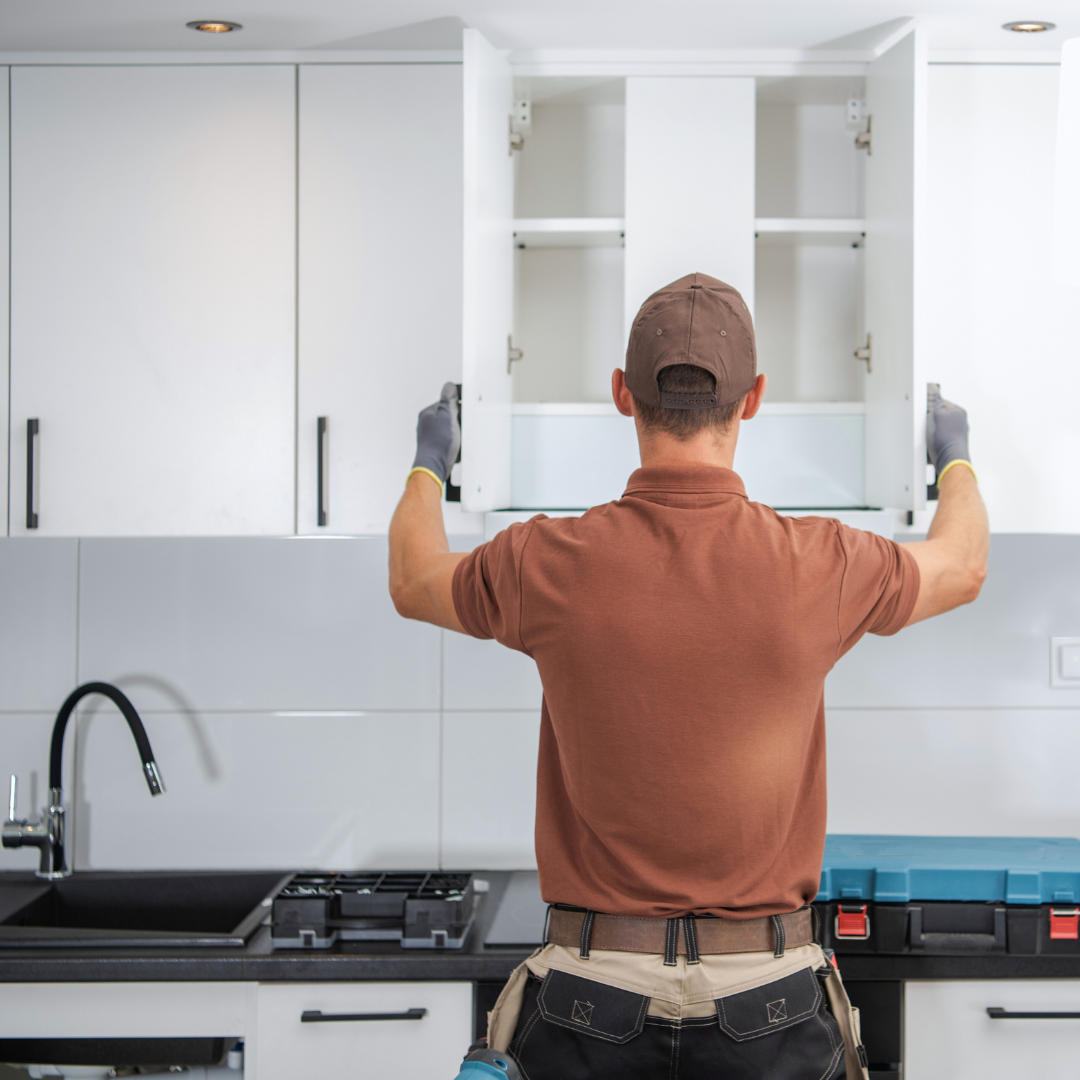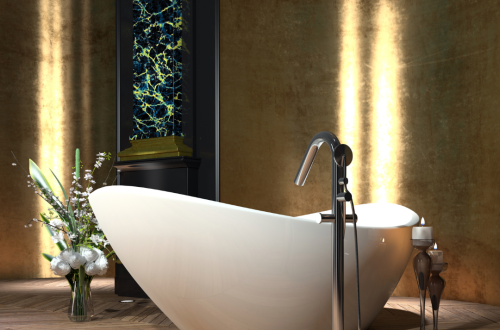Redecorating a kitchen can seem like a daunting task, especially when working within a limited budget. There are numerous affordable strategies to transform the space without breaking the bank. By prioritising key areas, anyone can refresh their kitchen while enhancing its functionality and aesthetic appeal.
Incorporating simple changes such as new cabinet hardware, a fresh coat of paint, or updated lighting can significantly impact the room. These small adjustments often yield impressive results, making the kitchen feel renewed and more inviting.
Exploring DIY projects and embracing creativity also provides a cost-effective avenue for unique decor. These methods not only save money but also allow for personal expression, making the kitchen a true reflection of one’s style.
Planning Your Budget Kitchen Redecoration
Creating a cost-effective kitchen design involves strategic planning and careful consideration of expenses. Budget-friendly ideas can revitalise a space without overspending, focusing on essential elements and prioritising investments wisely.
Setting a Realistic Budget
Establishing a realistic budget is crucial before beginning any kitchen redecoration. Start by assessing the current state of the kitchen and identifying areas that need improvement.
- List Necessary Changes: Focus on essential upgrades, such as cabinetry, countertops, or appliances. Make a list to organise priorities based on what impacts functionality and aesthetics most.
- Research Costs: Gather quotes from suppliers and contractors, comparing prices to get the best deals. Use online resources to estimate costs for materials and labour.
- Contingency Fund: Set aside around 10-15% of the total budget for unforeseen expenses, which can arise during redecoration.
Prioritising Investments in Kitchen Units
Certain kitchen units offer greater value for the investment. Assess which elements will enhance the kitchen’s overall functionality and style.
- Cabinetry: Well-constructed cabinets can dramatically change the appearance and usability of a kitchen. Consider refacing cabinets or adding new hardware for a fresh look without the cost of replacements.
- Countertops: Materials like laminate or butcher block can provide attractive surfaces at a lower price. Evaluate options that offer durability and aesthetic appeal within the budget.
- Appliances: Invest in energy-efficient appliances that save money in the long run and improve performance. Look for sales or second-hand options to maximise purchasing power.
By carefully setting a budget and prioritising essential kitchen units, anyone can achieve an impressive transformation while staying within financial limits.
Choosing Affordable Decorative Elements
Incorporating budget-friendly decorative elements can significantly enhance the kitchen’s aesthetic. Thoughtful selections can create a stylish and inviting atmosphere without major renovations. Several options allow for individual expression while being cost-effective.
Incorporating Open Shelving
Open shelving provides an opportunity to display decorative items while keeping essentials accessible. It’s a cost-effective alternative to traditional cabinets. Thoughtfully arranged dishes, glassware, or cookbooks can form visual interest.
She can use reclaimed wood or ready-made shelf units to save money. Adding some personal touches, such as family heirlooms or unique finds, can help create a distinctive look.
For an added touch, consider painting the shelves to match or contrast with the wall colour. This can create a cohesive flow while highlighting the stored items.
Selecting Window Treatments
Window treatments can greatly influence the kitchen’s brightness and comfort. Choosing affordable options, such as fabric curtain panels or bamboo shades, offers both style and function.
Light-coloured fabrics can help reflect light, making the space feel larger. Alternatively, she may opt for patterns that add a pop of colour or personality.
For added versatility, consider using a double curtain rod to layer sheer and opaque fabrics. This allows for light control while maintaining privacy, achieving a functional and attractive window treatment.
Adding a Feature with a Kitchen Rug
A kitchen rug can serve as a focal point while providing comfort underfoot. Selecting a durable and washable rug is essential, especially in high-traffic areas.
Bold patterns or colours can uplift the décor and create a warm atmosphere. Size should be chosen carefully; a rug that is too small may appear out of place, while one that is too large can overwhelm the space.
Placement matters; she should position the rug in areas like in front of the sink or near the dining table. This not only adds comfort but also delineates spaces within an open floor plan.
Enhancing the Space with Houseplants
Incorporating houseplants can breathe life into the kitchen. They improve air quality and create a fresh, vibrant atmosphere.
Low-maintenance options such as herbs, succulents, or pothos are ideal for kitchen environments. She can choose decorative pots that complement her kitchen décor for additional aesthetic appeal.
Placement should consider both sunlight and accessibility. Hanging pots or shelves can utilise vertical space, freeing up counters while showcasing greenery. Regular watering and care ensure that they remain a delightful aspect of the kitchen design.
DIY Projects and Upcycling
Transforming a kitchen on a budget can be achieved through a variety of DIY projects and upcycling techniques. Focusing on painting, creating feature walls, and repurposing furniture can refresh the space without significant costs.
Painting Kitchen Cabinets and Walls
Painting kitchen cabinets can dramatically change the appearance of the space. To begin, clean the cabinets thoroughly. Afterwards, choose a high-quality paint specifically designed for kitchen surfaces. A satin or semi-gloss finish works well, as it is easier to clean.
It’s important to use appropriate tools, such as a paintbrush for detailed areas and a roller for larger surfaces. A primer should be applied first to ensure the paint adheres properly. She advises letting each coat dry before adding another for the best results. Walls can also be updated with a fresh coat of paint in a complementary colour, enhancing the overall aesthetic of the kitchen.
Creating a Chalkboard Feature Wall
A chalkboard feature wall in the kitchen not only looks stylish but also serves a practical purpose. To create this, choose one wall or section of a wall. It’s essential to clean the surface before applying chalkboard paint.
Using a paintbrush or roller, apply a couple of coats of chalkboard paint, allowing adequate drying time between each. Once dried, the wall can be used to jot down grocery lists, recipes, or daily reminders. This project brings versatility, as the chalkboard surface can change with the seasons or personal preferences.
Upcycling Old Furniture
Upcycling old furniture can add unique character to the kitchen. Items such as chairs, tables, or shelving units can be transformed with a simple paint job or new hardware.
Begin by selecting furniture that may need repair or simply a new look. Sand down any rough spots, and paint with a colour that complements the kitchen decor. For an added touch, consider replacing knobs or handles with vintage or modern options. This not only enhances aesthetics but also contributes to sustainability.
Smart Storage Solutions for Small Kitchens
Small kitchens can benefit greatly from innovative storage solutions. By maximising wall and vertical spaces, one can create an efficient and organised environment that enhances functionality.
Maximising Wall Space with Open Shelving
Open shelving is an excellent way to utilise wall space in small kitchens. By installing shelves at varying heights, one can display attractive dishes and store frequently used items within easy reach.
Tips for Open Shelving:
- Select sturdy materials like wood or metal to support various kitchen items.
- Incorporate decorative elements such as plants or cookbooks to add character.
- Arrange items by size or use to create a visually appealing layout.
These shelves keep essential items accessible while maintaining an open, airy feel in the kitchen. They can also reduce the need for bulky cabinets, freeing up more space.
Utilising Vertical Spaces
Vertical storage solutions can transform poorly utilised areas into functional spots. Consider installing pegboards or magnetic strips to keep utensils and knives organised and visible.
Benefits of Vertical Solutions:
- Use ceiling-mounted racks for cookware—this keeps counters clear.
- Add hooks for mugs and aprons, which saves drawer space.
- Make use of tall cabinets or corner shelves for storing less frequently used items.
By thinking vertically, small kitchens can maximise storage potential, making meal prep and cooking more efficient.






